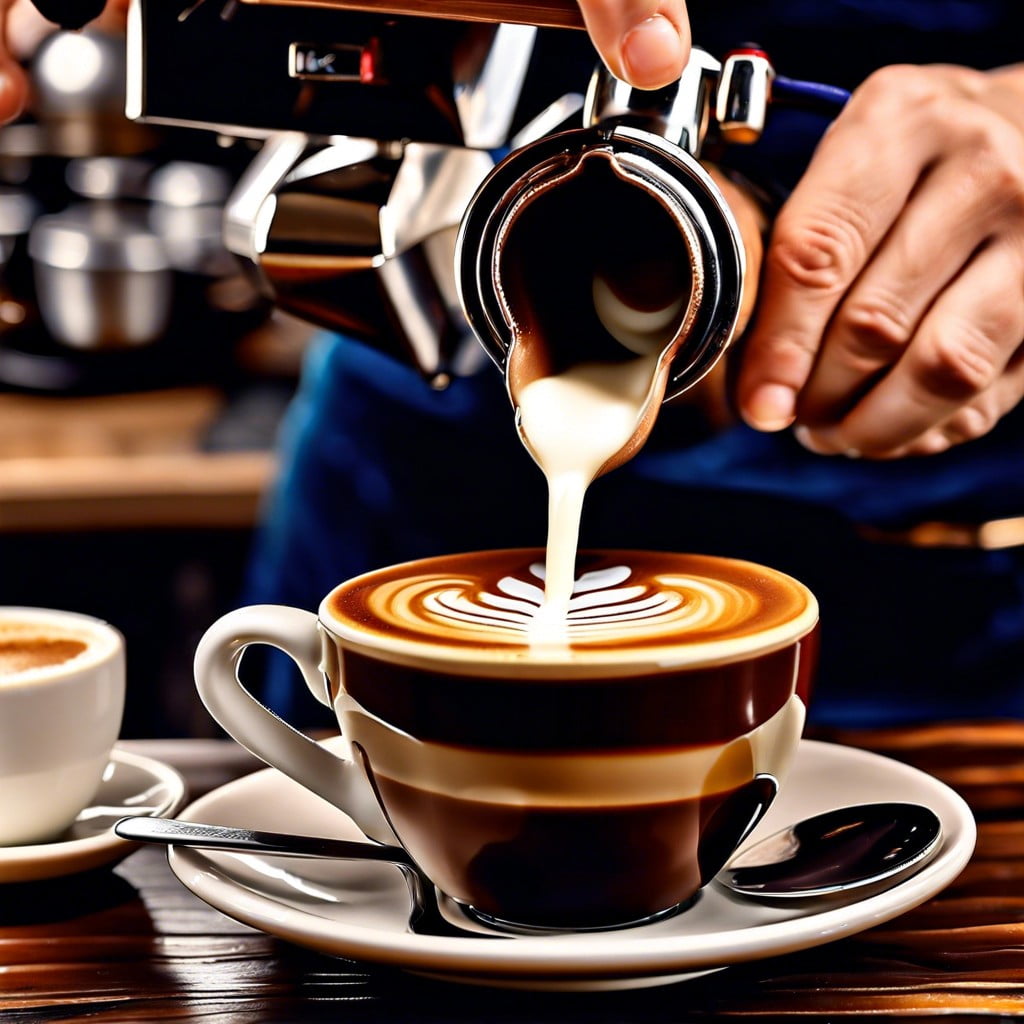Discover what sets latte coffee apart and how it differs from other popular espresso-based beverages.
Definition of Latte

A latte is a popular coffee drink that blends espresso with steamed milk and a light layer of foam. Originating in Italy, its name comes from “caffè latte,” which means “milk coffee.” Typically, the beverage contains about one-third espresso and two-thirds heated milk, topped off with a small cap of foam. This coffee is beloved for its smooth, creamy texture and strong yet balanced flavor profile, making it a morning favorite for many. Its preparation flexibility has led to numerous variations, including flavor additions like vanilla or caramel.
History of Latte Coffee
Latte, or caffè latte, which translates to “milk coffee” in Italian, has its roots deeply embedded in European coffee traditions. Originally a breakfast drink in Italy, it was made from a blend of strong coffee and steamed milk to create a robust start to the day.
The latte began gaining popularity outside Italy in the 1980s, particularly in the United States, due to the rising demand for more milk-based espresso drinks. This trend was partly driven by American coffee chains, which adapted the traditional Italian beverage to suit local tastes and popularized the term “latte”.
The typical preparation using a larger proportion of steamed milk compared to its Italian counterpart was adapted to appeal to the American palate. This adaptation fostered a global latte culture, paving the way for various creative interpretations across the globe.
How to Make a Latte
Start with quality espresso. Use a strong, finely-ground coffee, as the rich espresso base is crucial for a perfect latte.
Heat your milk. Whether using a steamer or a microwave, aim for milk that’s steamed to about 150 to 155 degrees Fahrenheit. This temperature ensures the milk is hot without being scalded, keeping the texture silky and enhancing sweetness.
Pour with precision. Begin by pouring the steamed milk into the espresso from a low height for smoother integration, then raise the pouring pitcher an inch or two to create a thin stream of milk. This technique helps mix the espresso with the milk evenly.
Master the art of froth. If you’re aiming for a small amount of foam, tilt the cup slightly as you pour the remaining milk to encourage a light layer of froth to form on top. This not only looks appealing but adds a creamy texture to each sip.
Practice makes perfect. The proportions and techniques can vary slightly depending on personal taste and the type of equipment used, so experiment a few times to find your perfect balance.
Comparison Between Latte and Cappuccino
Lattes and cappuccinos are like siblings in the coffee family, both hailing from espresso but parting ways in milk and texture. A typical latte blends one shot of espresso with about three times as much steamed milk and a small cap of milk foam. This combination creates a creamy, smooth beverage with just a hint of coffee peeking through.
In contrast, a cappuccino champions a balance of ingredients, usually consisting of equal parts espresso, steamed milk, and frothy milk foam. This trinity offers a bolder espresso flavor, highlighted by a rich and airy foam that adds texture and body.
The key differences stem from milk ratios and texture, making lattes creamier and milder, while cappuccinos offer a stronger espresso punch and textured feel.
Iced Latte Preparation and Serving
Switching gears to chilled versions, preparing an iced latte involves a few simple steps that promise a refreshing twist on this classic drink. Start by pulling a shot of espresso. While the espresso brews, fill a tall glass with ice. Pour the fresh espresso over the ice, immediately capturing the rich aromas before they dissipate. Follow this by slowly pouring cold milk of your choice into the glass, maintaining a careful balance to avoid diluting the espresso’s robust flavor. Stir gently to mix while keeping the layered visual appeal intact.
For a personalized touch, add flavored syrups or a sprinkle of cocoa powder before serving. Always serve with a straw to allow your guests or yourself to stir further as needed and enjoy every last sip. This preparation method ensures a cool, caffeinated treat that’s perfect for warm weather or a sunny afternoon pick-me-up.